
Organological Research
Historical Music Wire
Historical Music Wire
Stephen
Birkett
 |
Organological Research Historical Music Wire |
Stephen
Birkett
|
Research
Piano Design
Organology Design Materials Music Wire Leather Physical Systems Animal Growth Modelling Environmental Systems Teaching
Music
|
Reproduction
of physically accurate historical music wire - soft iron, brass, and steel
- with the correct mechanical properties is a complicated and difficult
undertaking. The best hope for success lies in the application of modern
metallurgical analysis and production techniques to duplicate the raw
material, which is no longer readily available, and cannot be easily made,
and the use of this in historical wire drawing methods. Current research
is focusing on applying these principles to soft iron wire. | |||

| The relationships between wire material and drawing parameters are being investigated, as well as how these influence the mechanical properties of the final product. The focus of this is on the how the material influences tone quality. Tensile strength and yield point critically effect this in applications. The final result of the project will be an effective and economically viable technique for producing high quality reproduction historical iron wire appropriate for any stringed keyboard instrument before about 1830, by which time steel wire began to be more commonly used on pianos. | |||
Historical bench drawing
of fine wire (0.2 to 1 mm diameter)
| ||||
An article describing historical wire technology and details about the current iron wire project is available: SH Birkett & P Poletti (2004). Reproduction of authentic historical soft iron wire for musical instruments. Actes Rencontres Harmoniques Lausanne, April 2002 (in press). | ||||
DIDEROT (1758-1781) PLATES FROM 'FORGES' | ||||
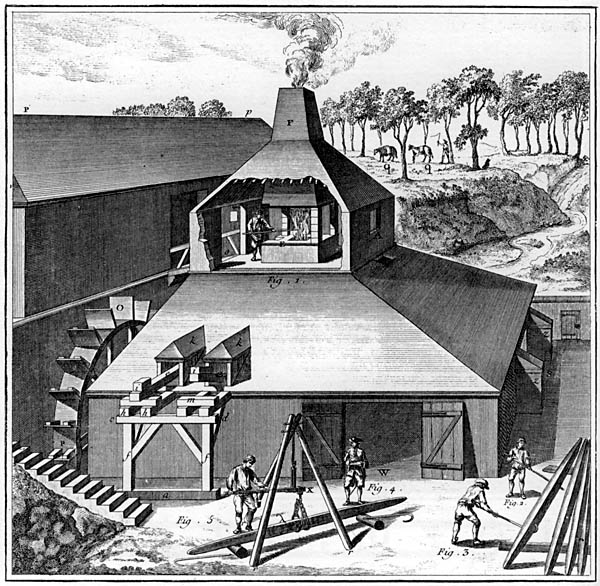 | ||||
Smelting operations | ||||
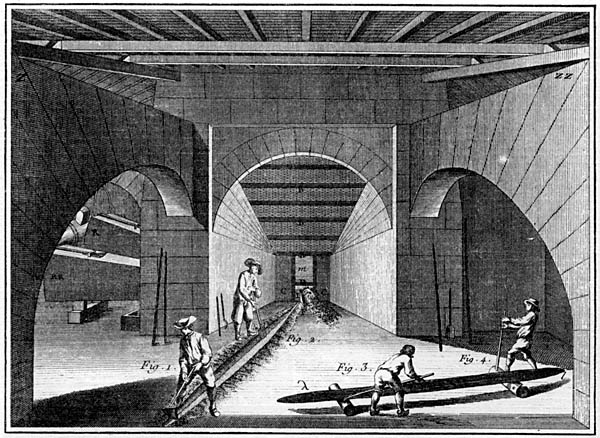 | ||||
| Casting pigs | ||||
 | ||||
Straining to rods | ||||
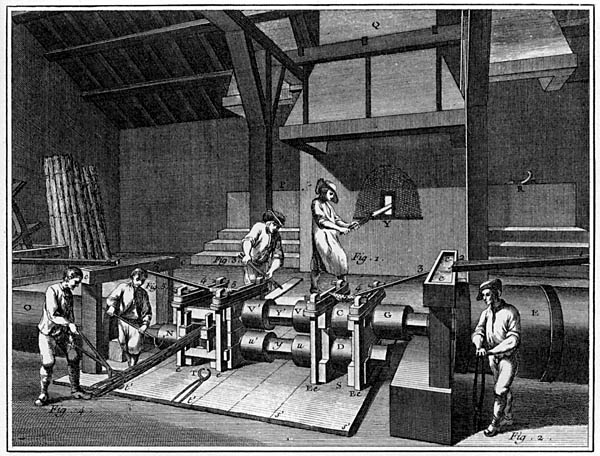 | ||||
Rod production in a slitting mill | ||||
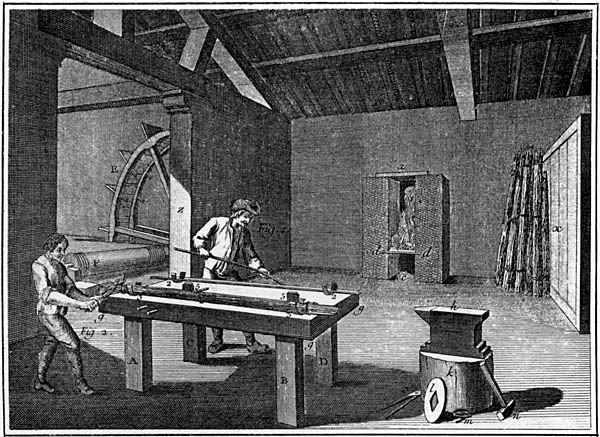 | ||||
Bundling rods for fine wire drawers | ||||
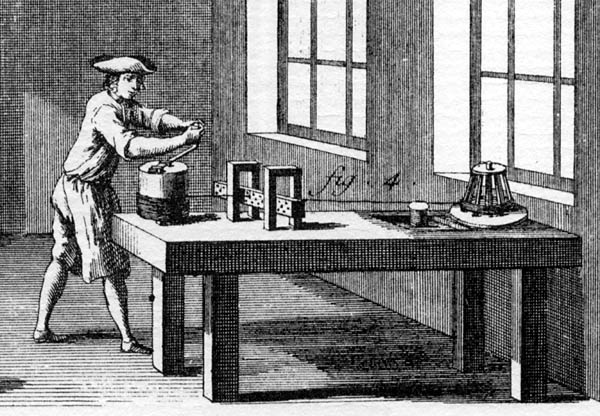 | ||||
Bench drawing of fine wire | ||||